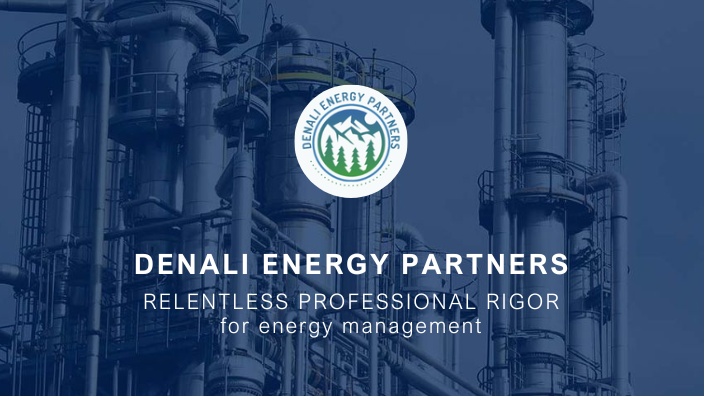What Resources Can Be Transformed into Clean Energy in Your Energy Sector Company
Denali-ep
| 21 de octubre de 2024
What Resources Can Be Transformed into Clean Energy in Your Energy Sector Company: Introduction
In the modern era, the transition to clean energy is not just a trend but an urgent necessity for companies in the energy sector. Adopting clean energy sources helps reduce carbon footprints while offering economic benefits and improving corporate image. In this article, we will explore the resources that can be transformed into clean energy and how their implementation can transform your company.
Available Natural Resources
Solar Energy
Solar energy is one of the most accessible clean energy sources. Installing solar panels on a company's premises can significantly reduce energy bills. These systems convert sunlight into electricity, providing a constant source of energy during the day. Additionally, using solar panels contributes to decreasing greenhouse gas emissions, enhancing the company's sustainability.
Wind Energy
Another viable option is wind energy, which uses wind turbines to convert wind into electricity. Installing wind turbines in areas with consistent winds can provide a substantial source of energy. One of the main advantages is the reduction in operational costs, as once installed, turbines require relatively little maintenance.
Hydropower
Hydropower, which harnesses the flow of water to generate electricity, is also an option to consider. Although installing a hydroelectric plant can be costly, long-term benefits include a constant source of energy and storage possibilities. It is crucial to assess the availability of water resources and environmental impacts before opting for this technology.
Waste and Byproducts as Energy Resources
Biomass
Biomass refers to any organic material that can be used as fuel, including agricultural waste, wood, and organic waste. Converting biomass into energy can be achieved through combustion, gasification, or fermentation. The main advantage of biomass is its availability and capacity to reduce waste, although managing aspects like particulate emissions may be necessary.
Biogas
Biogas is produced from the anaerobic decomposition of organic matter such as manure and food waste. This gas can be used to generate electricity or heat. Biogas production not only provides a renewable energy source but also helps reduce greenhouse gas emissions from waste.

Organic Waste
Organic waste, such as food scraps and vegetable remnants, can be converted into energy through processes like anaerobic digestion or incineration. These processes not only provide energy but also help reduce the amount of waste ending up in landfills, contributing to sustainability.
Emerging Technologies
Geothermal Energy
Geothermal energy harnesses the Earth's internal heat to generate electricity or heating. This technology is particularly useful in regions with volcanic or geothermal activity. Geothermal systems offer a constant and reliable source of energy with minimal environmental impact. However, initial installation can be costly and requires adequate geological assessment.
Wave and Tidal Energy
Wave and tidal energy harness the movement of water in oceans to generate electricity. Although these technologies are still in relatively early development stages, they hold great potential for providing clean and reliable energy. Challenges include high installation costs and potential impacts on marine ecosystems.
Benefits of Implementing Clean Energy
Reduction of Operating Costs
Implementing clean energy technologies can lead to significant reductions in operating costs. For example, using solar panels and wind turbines can decrease dependence on grid power, resulting in lower electricity bills. Additionally, clean energy often involves lower long-term operating and maintenance costs.
Regulatory Compliance
Companies adopting clean energy can benefit from tax incentives and comply with increasingly stringent environmental regulations. Implementing clean technologies not only helps meet current laws but also prepares companies for future regulations. This may include tax reductions and subsidies for renewable energy projects.
Corporate Social Responsibility
Adopting clean energy enhances public perception and company reputation. Consumers and partners increasingly value commitment to sustainability and reducing carbon footprints. Case studies show that companies investing in clean energy enjoy greater customer loyalty and a positive market image.
Strategies for Implementation
Initial Assessment
Before implementing any clean energy technology, conducting a thorough initial assessment is crucial. This includes analyzing available resources, evaluating the company's energy needs, and developing a budget. A well-crafted plan ensures that the transition to clean energy is efficient and cost-effective.
Integration with Existing Operations
Integrating new technologies with existing operations can be challenging. It is important to adapt infrastructure and train staff to ensure a smooth transition. Careful planning and adequate training are essential to minimize disruptions in daily operations.
Monitoring and Maintenance
Continuous monitoring and regular maintenance are critical for ensuring optimal performance of clean energy technologies. Implementing monitoring tools and techniques allows for timely issue detection and preventive maintenance. This helps maximize efficiency and extend system lifespans.
Conclusion
The transition to clean energy is a fundamental strategy for companies in the energy sector. Harnessing natural resources, byproducts, and emerging technologies not only contributes to sustainability but also offers economic benefits and enhances corporate reputation. Careful planning and implementation are key to maximizing the opportunities presented by clean energies.
What are eco-industrial parks (EIPs)?
Eco-industrial parks are communities of manufacturing and service businesses located together on a common property, aiming to enhance environmental, economic, and social performance through collaboration in managing resource issues. They focus on sustainable practices while promoting cooperation among businesses to minimize environmental impact.
How do industrial parks contribute to sustainability?
Industrial parks improve sustainability by implementing recycling initiatives, reducing carbon emissions, and promoting efficient use of resources like water and energy. They also foster cooperation among businesses, enabling them to work towards common environmental goals.
What certifications are available for sustainable industrial parks?
Certifications such as LEED (Leadership in Energy & Environmental Design), WELL Building Standard, and EDGE (Excellence in Design for Greater Efficiencies) recognize industrial parks that meet specific sustainability criteria. These certifications validate a park's commitment to sustainable practices and can attract businesses seeking eco-friendly environments.
What challenges do industrial parks face in becoming more sustainable?
Challenges include high initial costs for implementing sustainable practices, resistance to change from businesses focused on profitability, and the need for regulatory compliance. However, with a clear strategy and commitment to sustainability, these challenges can be effectively addressed.
What benefits do companies gain from adopting clean energy in industrial parks?
Companies can experience significant reductions in operating costs, compliance with environmental regulations, and enhanced corporate social responsibility. Adopting clean energy improves public perception and can lead to greater customer loyalty and a positive market image.




